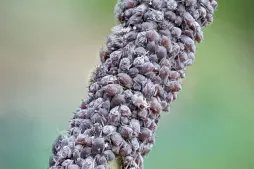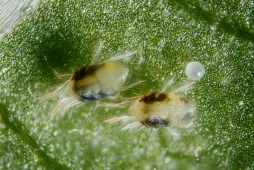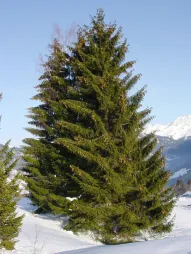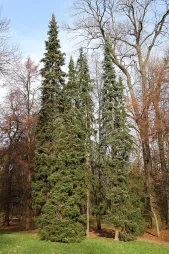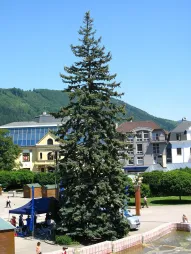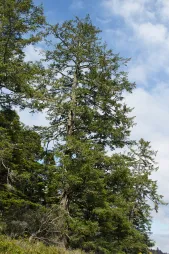Picea mariana, black spruce
A lover of snow, cold and wide open spaces, Picea mariana has made its home in North America. Some specimens are also found in Norway. Called black spruce because of its dense foliage and dark bark, this member of the Pinaceae family actually comes in a wide range of colors.
How to recognize the black spruce, Picea mariana?
A tree with a pyramidal, bushy habit, Picea mariana rarely exceeds 20 meters in height. But it can reach 30 or even 40 meters when the climate is right.
The straight trunk bears short, compact, drooping branches. The wood is covered with a scaly grey-brown bark.
Picea mariana's evergreen foliage consists not of leaves, but of rigid, quadrangular needles. Blue-green on the upper surface, the underside is a much lighter glaucous green.
The cones are cylindrical, almost round. They form dense clusters on the crown. While they are erect on abies koreana Korea (Abies koreana), they are drooping on black spruce. Purple pine cones turn brown when mature. They are then ready to release their black, winged seeds.
Picea mariana is harmless to humans and animals. It is not toxic on contact or ingestion.
Our maintenance tips
Consider the growth of your Picea mariana before planting it. The largest specimens exceed several dozen meters in height and should therefore be installed where they won't get in anyone's way.
Watering
Water your Picea mariana when the soil surface is at least three centimetres dry.
Use non-calcareous water at room temperature, such as rainwater.
After 20 minutes, empty the planter or saucer. Stagnant water can rot the roots.
Repotting
Choose a pierced terracotta pot. This material ensures more uniform evaporation of water and prevents root rot. The container should be deep so as not to topple under the weight of the plant and allow your Picea mariana to grow. Gravel or clay balls can be placed at the bottom to improve drainage.
Pour in a layer of rich potting soil, such as potting soil for acid-loving plants. Plant your Picea mariana. The root ball should be three to five centimetres below the edge to form a watering trough. Add potting soil.
Press down and water until the water runs off through the drainage holes to encourage rooting.
Fertilization
To promote the growth of your Picea mariana, apply fertilizer in spring and summer.
Fertilize your Picea mariana with a conifer fertilizer once a month. Follow the dosage and manufacturer's instructions to avoid damaging the foliage.
Prune
Your Picea mariana does not need pruning. On the contrary, pruning could be detrimental to its growth.
You can, however, remove dead branches in early summer using a clean, sharp tool, such as pruning shears.
Plantation
Soak your Picea mariana to rehydrate the root ball.
Meanwhile, dig a hole twice the size of the root ball. Plant your Picea mariana. The rootball should be level with the soil. Fill in with a mixture of garden soil and universal potting compost. You can add fertilizer if your soil is poor.
Press down and water thoroughly to help the plant take root.
Seedling
Your seeds are more likely to germinate if you stratify them cold.
Fill an airtight bag (e.g. A freezer bag) with potting soil for seedlings and plantations. Moisten the substrate. Bury your seeds in the potting soil, close the bag and place it in a place where the temperature is between 0 and 5°C for three weeks (refrigerator, garage).
Check your seeds regularly to make sure the potting soil stays moist and doesn't rot. As soon as a seed germinates, you can plant it.
Pour seedling and planting soil into cups. Plant your seed a centimetre deep. Spray the substrate to moisten it.
Place your seedlings in a bright spot where the temperature does not exceed 15°C.
Diseases / Threats
Information
| Family | Pinaceae - Pinaceae |
| Type | Picea - Picea |
| Species | Picea mariana - Picea mariana |
| Lifecycle | Perennial |
| Foliage | Evergreen |
| Exposure | |
| Substrats | |
| Planting methods |
Open ground In pots In tubs |
| Category | |
| Tags |
Beginner Rustic |
| Origin |
North America |
| Hardiness (USDA) | 7b |
| Leaf color |
|
| Flower color |
|
| Fruit color |
|
Discover plants from the same family













